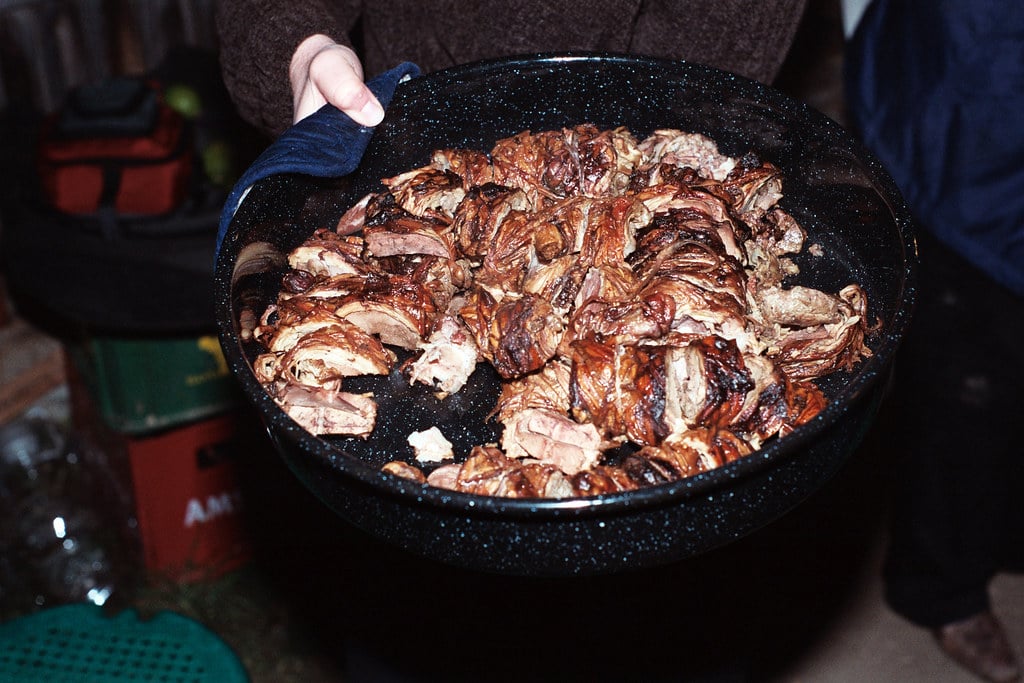
Greece is undeniably home to some of the best food to be found anywhere in the entire world. Using fresh ingredients, prepared with with age-old recipes, Greek cuisine is full of surprising delicacies that your palate will thank you for.
Instead of sticking to the popular classics such as spanakopita and moussaka, we will instead explore some of the more extravagant Greek delicacies that you should definitely try.
Traditional Greek Dishes
Here are some of the weirdest traditional dishes that Greeks enjoy, or shall we say, those who are not squeamish love to eat!
1. Kokoretsi
This dish is popular during Easter, but is eaten during the rest of the year as well. This rotisserie dish is made of lamb or goat intestines, heart liver, and the meat of other organs, wrapped in caul fat (or lace fat) and by yards of cleaned intestines.
2. Splinadero
This is a very popular sausage consumed in the Thessaly region. It is made from spleen and mutton, and is broiled over a charcoal fire. That may not sound so weird, but there is more: this production takes place after it the meat has first been soaked in sheep and goat’s blood.
3. Fried Octopus Ink Sack
The locals on the island of Kalymnos love this dish and you can easily find it there if you are so inclined. This dish utilizes the ink sacks of the octopus, which are carefully removed with a knife and then boiled and deep-fried. It’s an acquired taste.
4. Ameletita (lamb’s testicles)
This dish is named after what it is made from: ameletita, or ‘unmentionables’ in English. The lamb testicles are prepared either grilled or deep-fried and are then seasoned with a little oregano, olive oil and lemon. Kind of like chicken, but not.
5. Kefalaki (lamb’s head)
Some families opt for a lamb’s head soup (kefalaki soup) instead of the traditional magiritsa soup (see below) on Holy Saturday night after church. As the lamb’s head is served as part of the yiouvetsi dish on Easter Sunday, the boiled head is used for the preparation of soup the night before.
6. Magiritsa
This Easter dish is a tradition across the country, although its preparation varies in different regions. Mostly consumed as a soup, it is served immediately after the midnight Divine Liturgy of Holy Saturday. It is made from lamb offal (heart, liver, lungs, and kidneys) and lettuce, and is seasoned with onions, dill, butter, rice, and avgolemono (egg-lemon sauce).
7. Patsas the weird Greek soup
This dish is prepared from lamb or pork tripe and even sometimes the amimal’s feet. It is known for stinking up the entire house as it is being cooked, however, the soup has many fans, claiming it has many health benefits.
8. Hohlii
They are the snails that the French eat, but in Crete they call them hohlii (plural). Cretans cook them in several different sauces and serve them with different vegetables or by themselves.
9. Boumbari
This is a local specialty of Pelion: A huge sausage with chopped liver, rice herbs and spices wrapped inside an intestine. Delicious and much less dirty than the average sausage or hot dog.
10. Kourkoutzelia
Finally a strange Greek dish that has no lamb meat or offal. Kourkoutzelia (plural of kourkoutzeli) or kalogerakia or kalogeri, are nothing more than edible wildflowers. They are sauteed in the pan with garlic and fennel. Some boil them and serve them as a salad, accompany them with fried eggs or pickle them. According to those who have tried them, they are very tasty.
See all the latest news from Greece and the world at Greekreporter.com. Contact our newsroom to report an update or send your story, photos and videos. Follow GR on Google News and subscribe here to our daily email!



